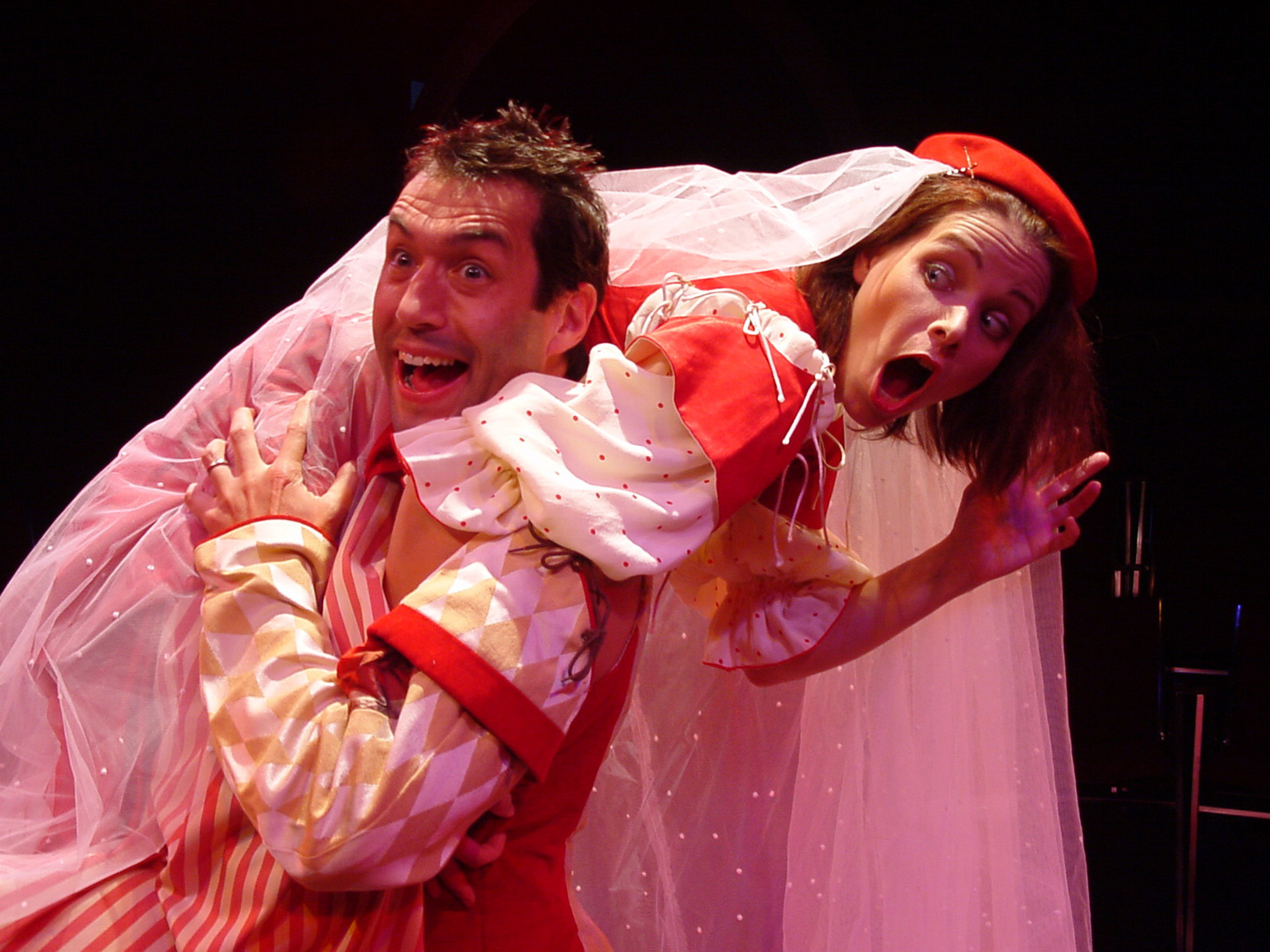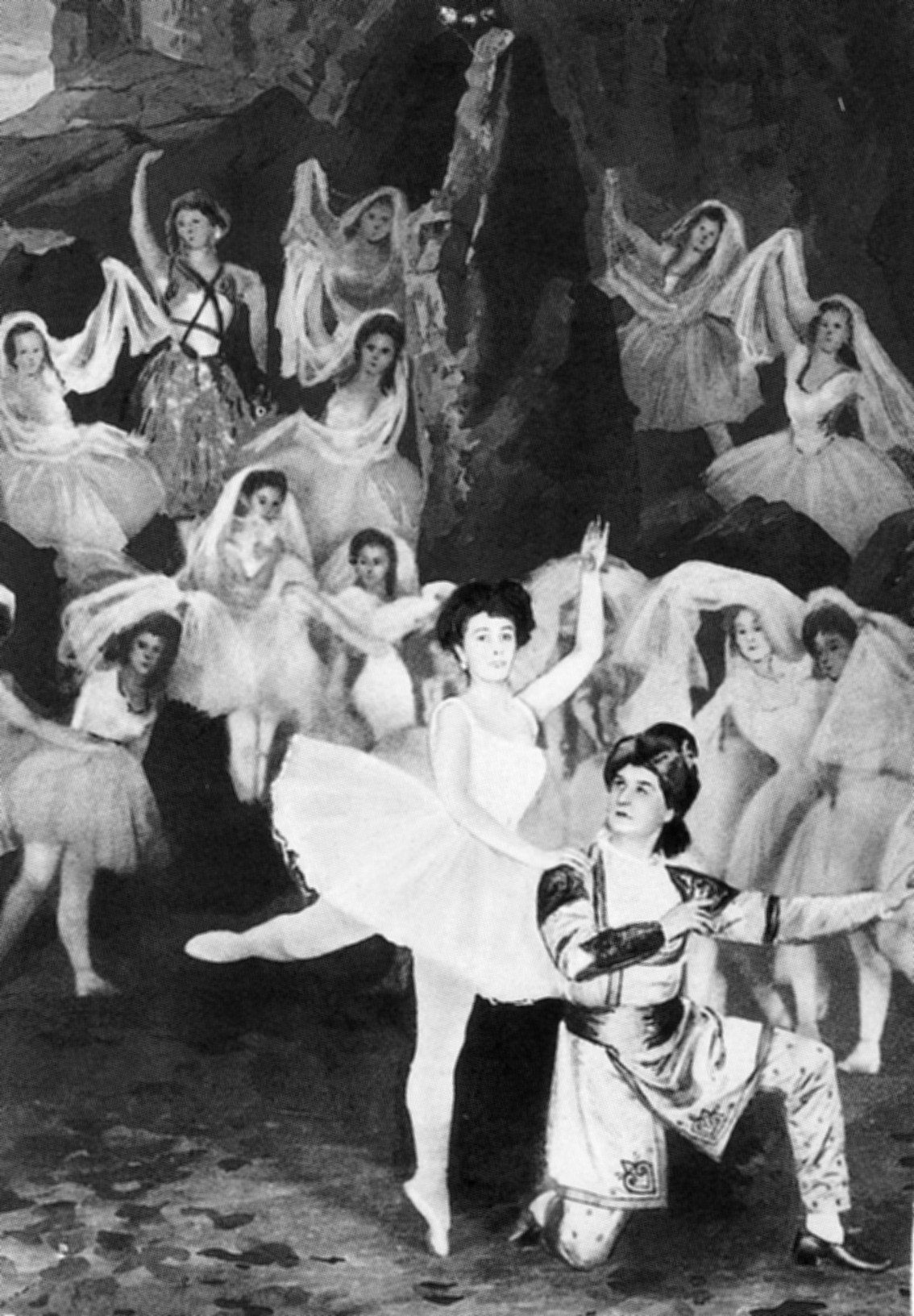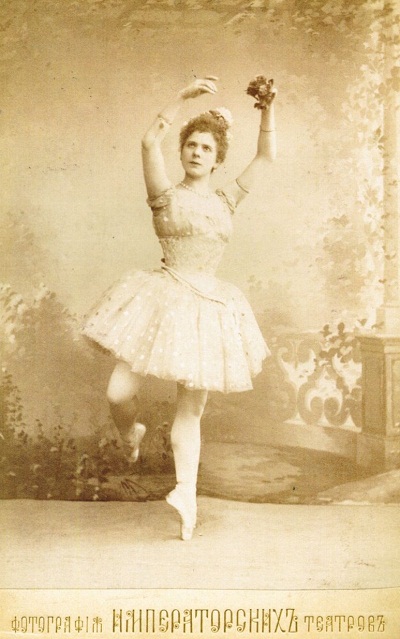|
Yelena Andrienko
Yelena Andrienko (russian: italic=yes, Елена Андреевна Андриенко) is a Russian soloist of Bolshoi Ballet, Honoured Artist of Russia. Biography Originally, Andrienko was born 24 March 1972 in a capital of Ukraine, Kiev where she attended Kiev Ballet School. After graduating from there, she was trained by Sofia Golovkina at the Moscow State Academy of Choreography. From 1993 to 1995, she appeared in many Yuri Grigorovich's plays such as the 1994's ''Giselle'' where she played the role of Myrtha, and ''The Golden Age'' where she appeared as Rita. In 1995, she played a role of Muse in a play called '' Paganini'' and the same year took a role of Snow White in a play of the same name. In 1996, she played Gamzatti in the ''La Bayadère'' and the same year participated in the Swan Lake of Vladimir Vasiliev as the Swan Princess. Next year, she participated in a play called ''Sleeping Beauty'' where she played a role of Fairy of Carelessness and the same year pla ... [...More Info...] [...Related Items...] OR: [Wikipedia] [Google] [Baidu] |
Solo (dance)
A solo dance is a dance done by an individual dancing alone, as opposed to couples dancing together but independently of others dancing at the same time, if any, and as opposed to groups of people dancing simultaneously in a coordinated manner. Solo dancers are usually the best dancers in a group or dance school. Most solo dancers start after about 6–7 years of dance or sooner. Most soloists are company kids of their dance school. They are usually in more than one dance. In Comparsas, there are various soloists who strut in front. They usually dance at the edges of the street so that the viewing public can appreciate their moves. Most male soloists carry a large lantern-like artifact on a large pole, resting on an oily pouch, which they make spin at will. Dance is a way to express emotions. See also *Sean-nós dance * Sean-nós dance in America *Irish dance *Step dance *Stepping (African-American) Stepping or step-dancing (a type of step dance) is a form of Percuss ... [...More Info...] [...Related Items...] OR: [Wikipedia] [Google] [Baidu] |
The Taming Of The Shrew
''The Taming of the Shrew'' is a comedy by William Shakespeare, believed to have been written between 1590 and 1592. The play begins with a framing device, often referred to as the induction, in which a mischievous nobleman tricks a drunken tinker named Christopher Sly into believing he is actually a nobleman himself. The nobleman then has the play performed for Sly's diversion. The main plot depicts the courtship of Petruchio and Katherina, the headstrong, obdurate shrew. Initially, Katherina is an unwilling participant in the relationship; however, Petruchio "tames" her with various psychological and physical torments, such as keeping her from eating and drinking, until she becomes a desirable, compliant, and obedient bride. The subplot features a competition between the suitors of Katherina's younger sister, Bianca, who is seen as the "ideal" woman. The question of whether the play is misogynistic has become the subject of considerable controversy, particularly among mode ... [...More Info...] [...Related Items...] OR: [Wikipedia] [Google] [Baidu] |
Dancers From Kyiv
Dance is a performing art form consisting of sequences of movement, either improvised or purposefully selected. This movement has aesthetic and often symbolic value. Dance can be categorized and described by its choreography, by its repertoire of movements, or by its historical period or place of origin. An important distinction is to be drawn between the contexts of theatrical and participatory dance, although these two categories are not always completely separate; both may have special functions, whether social, ceremonial, competitive, erotic, martial, or sacred/liturgical. Other forms of human movement are sometimes said to have a dance-like quality, including martial arts, gymnastics, cheerleading, figure skating, synchronized swimming, marching bands, and many other forms of athletics. There are many professional athletes like, professional football players and soccer players, who take dance classes to help with their skills. To be more specific professional athletes ta ... [...More Info...] [...Related Items...] OR: [Wikipedia] [Google] [Baidu] |
Living People
Related categories * :Year of birth missing (living people) / :Year of birth unknown * :Date of birth missing (living people) / :Date of birth unknown * :Place of birth missing (living people) / :Place of birth unknown * :Year of death missing / :Year of death unknown * :Date of death missing / :Date of death unknown * :Place of death missing / :Place of death unknown * :Missing middle or first names See also * :Dead people * :Template:L, which generates this category or death years, and birth year and sort keys. : {{DEFAULTSORT:Living people 21st-century people People by status ... [...More Info...] [...Related Items...] OR: [Wikipedia] [Google] [Baidu] |
List Of Russian Ballet Dancers
This is a list of ballet dancers from the Russian Empire, Soviet Union, and Russian Federation, including both ethnic Russians and people of other ethnicities. This list includes as well those who were born in these three states but later emigrated, and those who were born elsewhere but immigrated to the country and performed there for a significant portion of their careers. The original purpose of the ballet in Russia was to entertain the royal court. The first ballet company was the Imperial School of Ballet in St. Petersburg in the 1740s. The Ballets Russes was a ballet company founded in the 1909 by Sergey Diaghilev, an enormously important figure in the Russian ballet scene. Diaghilev and his Ballets Russes' travels abroad profoundly influenced the development of dance worldwide. The headquarters of his ballet company was located in Paris, France. A protégé of Diaghilev, George Balanchine, founded the New York City Ballet Company. During the early 20th century, many Russ ... [...More Info...] [...Related Items...] OR: [Wikipedia] [Google] [Baidu] |
La Esmeralda (ballet)
''La Esmeralda'' is a ballet in three acts and five scenes, inspired by the 1831 novel ''Notre-Dame de Paris'' by Victor Hugo, originally choreographed by Jules Perrot to music by Cesare Pugni, with sets by William Grieve and costumes by Mme. Copère. It was first presented by the Ballet of her Majesty's Theatre, London on 9 March 1844, with Carlotta Grisi as Esmeralda, Jules Perrot as Gringoire, Arthur Saint-Leon as Phoebus, Adelaide Frassi as Fleur de Lys, and Antoine Louis Coulon as Quasimodo. Today the complete ballet is performed only in Russia, Eastern Europe, and by two ballet companies in the United States. The New Jersey Ballet introduced the full-length version for the first time in the United States in 2004, and the Russian Ballet Orlando performed La Esmeralda for the first time in 2021. Most Western ballet companies only perform two ''Esmeralda''-related pieces—''La Esmeralda pas de deux'' and ''La Esmeralda pas de six''—and the ''Diane and Actéon Pas d ... [...More Info...] [...Related Items...] OR: [Wikipedia] [Google] [Baidu] |
The Lesson
''The Lesson'' (french: La Leçon) is a one-act play by French-Romanian playwright Eugène Ionesco. It was first performed in 1951 in a production directed by Marcel Cuvelier (who also played the Professor). Since 1957 it has been in permanent showing at Paris' Théâtre de la Huchette, on an Ionesco double-bill with The Bald Soprano. The play is regarded as an important work in the " Theatre of the Absurd". Plot summary This play takes place in the office and dining room of a small French flat. The Professor, a man of 50 to 60, is expecting a new Pupil (aged 18). The Professor's Maid, a stout, red-faced woman of 40 to 50, worries about the Professor's health. As the absurd and nonsensical lesson progresses, the Professor grows more and more angry with what he perceives as the Pupil's ignorance, and the Pupil becomes more and more quiet and meek. Even her health begins to deteriorate, and what starts as a toothache develops into her entire body aching. At the climax of the p ... [...More Info...] [...Related Items...] OR: [Wikipedia] [Google] [Baidu] |
La Sylphide
''La Sylphide'' ( en, The Sylph; da, Sylfiden) is a romantic ballet in two acts. There were two versions of the ballet; the original choreographed by Filippo Taglioni in 1832, and a second version choreographed by August Bournonville in 1836. Bournonville's is the only version known to have survived and is one of the world's oldest surviving ballets. Taglioni version On 12 March 1832 the first version of ''La Sylphide'' premiered at the Salle Le Peletier of the Paris Opéra with choreography by the groundbreaking Italian choreographer Filippo Taglioni and music by Jean-Madeleine Schneitzhoeffer. Taglioni designed the work as a showcase for his daughter Marie. ''La Sylphide'' was the first ballet where dancing '' en pointe'' had an aesthetic rationale and was not merely an acrobatic stunt, often involving ungraceful arm movements and exertions, as had been the approach of dancers in the late 1820s. Marie was known for shortening her skirts in the performance of ''La Sylp ... [...More Info...] [...Related Items...] OR: [Wikipedia] [Google] [Baidu] |
In The Upper Room
Twyla Tharp (; born July 1, 1941) is an American dancer, choreographer, and author who lives and works in New York City. In 1966 she formed the company Twyla Tharp Dance. Her work often uses classical music, jazz, and contemporary pop music. From 1971 to 1988, Twyla Tharp Dance toured extensively around the world, performing original works. In 1973 Tharp choreographed ''Deuce Coupe'' to the music of The Beach Boys for the Joffrey Ballet. ''Deuce Coupe'' is considered the first "crossover ballet", a mix of ballet and modern dance. Later she choreographed ''Push Comes to Shove'' (1976), which featured Mikhail Baryshnikov and is now thought to be the best example of crossover ballet. In 1988, Twyla Tharp Dance merged with American Ballet Theatre, since which time ABT has premiered 16 of Tharp's works. On May 24, 2018, Tharp was awarded an honorary Doctor of Arts degree by Harvard University. Early life and education Tharp was born in 1941 on a farm in Portland, Indiana, the daugh ... [...More Info...] [...Related Items...] OR: [Wikipedia] [Google] [Baidu] |
Cinderella (Prokofiev)
''Cinderella'' (russian: Золушка, tr. ''Zolushka''; french: Cendrillon) Op. 87, is a ballet composed by Sergei Prokofiev to a scenario by Nikolai Volkov. It is one of his most popular and melodious compositions, and has inspired a great many choreographers since its inception. The piece was composed between 1940 and 1944. Part way through writing it Prokofiev broke off to write his opera ''War and Peace''. The premiere of ''Cinderella'' was conducted by Yuri Fayer on 21 November, 1945, at the Bolshoi Theatre, with choreography by Rostislav Zakharov and Galina Ulanova in the title role. ''Cinderella'' is notable for its jubilant music, lush scenery, and for the comic double-roles of the stepmother and the two stepsisters (which can be performed in travesti), more mad than bad in this treatment. Story Act I Cinderella, a young woman whose domineering stepmother forces her to act as a servant in her own home, helps her stepmother and two stepsisters to prepare for ... [...More Info...] [...Related Items...] OR: [Wikipedia] [Google] [Baidu] |
Raymonda
''Raymonda'' (russian: Раймонда) is a ballet in three acts, four scenes with an apotheosis, choreographed by Marius Petipa to music by Alexander Glazunov, his Opus 57. It was first presented by the Imperial Ballet at the Imperial Mariinsky Theatre on in Saint Petersburg, Russia. The ballet was created especially for the benefit performance of the Italian ballerina Pierina Legnani, who created the title role. Among the ballet's most celebrated passages is the ''Pas classique hongrois'' (a.k.a. ''Raymonda Pas de dix'') from the third act, which is often performed independently. Today ''Raymonda'' is performed by many ballet companies throughout the world with choreography that is derived primarily from the Kirov Ballet's 1948 revival as staged by Konstantin Sergeyev. Sergeyev greatly altered, and in some cases changed entirely, Marius Petipa's choreography, particularly in the dances for the ''corps de ballet''. The choreography as revised by Sergeyev remains the tra ... [...More Info...] [...Related Items...] OR: [Wikipedia] [Google] [Baidu] |





